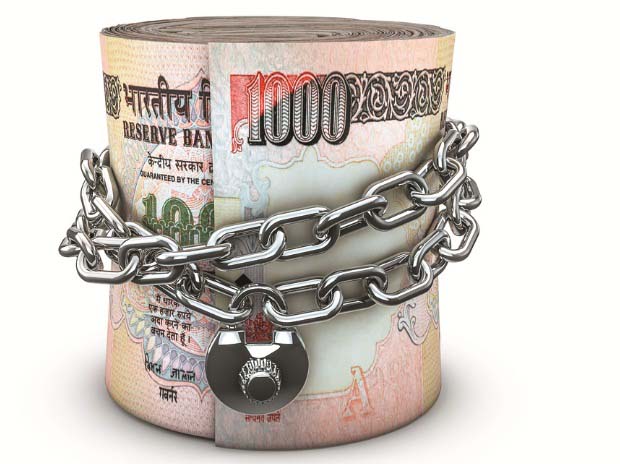Prithviraj Thali
With the global fraternity and international economic bodies such as IMF forecasting a huge growth potential for India, we seem to be well past the point where we can still be biased about our views on demonetisation. The voices for and against the move have died down, and one can only hear some whispered misgivings slowly and inevitably giving way to fresh shoots of optimism on the subject.
Vested interests have tried to demonise the whole issue. There were different groups of people that reacted differently to the historic announcement. Modi shell-shocked us with the rabbit he pulled out of his policy-hat on November 8, 2016, even timing the announcement with mathematical precision well after the business hours on that day.
With respect to demonetisation, the Indian populace can be divided arguably into precisely four groups as below:
1. The entire cash-specific businesses or parts thereof that were carried out by varied assortment of consumers, retailers, real estate firms and agents, its colour ranging right from ‘white’ to ‘not-so-white’ all the way to deepest shades of ‘despondent black’.
2. The media which divided itself over the issue into those who praised the move as courageous, those that actively showed it as having inherent flaws and bad for the economy, and many others that found their voice somewhere in between these extremes.
3. The Opposition which, true to its nature and led by habit, criticised the move, as they have been doing with everything else.
4. The Banking system as a whole, consisting of the PSU Banks, the Private players and the cooperative banking segments, which swung into frenzied action the same day. The top brass had just a few hours to assess and design the ‘actionables’ that were to be circulated down below for implementation. Board Room meetings were conducted till the wee hours of early morning of 9th November.
Being a banker, I belong to No. 1 and No. 4 of the above categories. I remember doing nothing the next day and eagerly waiting for some cascade of what had been decided at our Head Office. I plead guilty of biased sentiments about the whole issue in as much as I witnessed the demonetisation drive from either side of the banking counter only: as a behind-the-desk banker at my own bank branch and then as a customer in some other bank queuing for notes exchange.
To begin with, the immediate fallouts of the gamble were somewhat a mixed bag:
1. A large chunk of economic transactions, if not all of it, has been brought within the scope of the banking channel, thereby reducing the possibility of tax evasion. Though there still are and will be attempts at evasion, a clear message has been sent to those nefarious elements that enough is enough!!
2. Increase in accounted money in the economy has led to increase in tax revenue for the government.
3. Price correction in real estate prices, which were highly exaggerated because of the 30-40 % cash component received from the buyer, which conveniently circumvented taxation norms.
4. The super-rich which had stashed away large sums in high denominations of Rs. 1000/- and Rs. 500/- suddenly found that some remote ‘ex-chaiwala’ had the power to turn their cash hoards overnight into nothing but paper.
5. The Enforcement Directorate, the CBI and such monitoring authorities got a lot of god-sent fodder to chew upon. What surfaced was a long list of questionable bulk cash deposits by squiggly squishy ‘worms’ which had hitherto stayed snugly out of their reach.
6. The dissent-fuelling divisive elements in Kashmir suddenly were left high and dry with no money to pay the eager stone-pelters in Kashmir. Resultantly, peace has visited the valley after a long stretch, notwithstanding a few scattered flickering acts of dissent.
Probably for the first time in Independent India’s history, such a move was by and large whole-heartedly welcomed by most of the directly affected electorate. Interestingly, the demonetisation drive triumphed especially in the remote modernisation-starved pockets of UP, Bihar and Jharkhand, where there are still no bank branches within a radius of 4-5 kms. Probably, it worked because it came from a man, who had the courage of his conviction and possessed the political will to carry the movement to its rightful conclusion.
On the downside, banks are still charging penal charges for payments made through debit and credit cards at Point-Of-Sale (POS) terminals and understandably so. Everything comes at a price and so does plastic money. The government might as well divert the additional revenue that has resulted from this exercise to the banking channels, and the third party POS machine companies for sale of these machines at minimal or no cost, so that the burden neither falls on the paying customer nor on the banks
Payments Banks, like Paytm and Freecharge for instance, have a greater role to play in educating the general public to go cashless rather chasing profit as the sole goal.
There are many who hold that the BJP-led govt. is snooping on the financial transaction of the voters. But, such sentiments are generally echoed by those who have some self-serving purpose and absolutely no concern for the well-being of the common man.
While experts from around the world praised Mr. Modi for this courageous step, a few of our own people back home were pouring all their strength and vigour in opposing him and trying to whip up a storm in the public mind. Fortunately for India, that did not work.
What makes Modi’s step seem rather harsh and hard on his Indian brothers and sisters, is the long spell of post-Independence years marked by a virtually unending list of scams.
The recent poll results in UP is a clear harbinger of progressive winds and a sign of an electorate swayed solely by the promise of development. How Yogi Adityanath fares is anyone’s guess right now. But, all in all, India shows great promise and potential to emerge as a giant especially under the likes of dedicated leaders who don’t hesitate to take decisions in the larger interest.
Admittedly, lacunae still do exist, as they always would even in a near-Utopian society. But, to quote a cliché, well-begun is half-done. May Mother India reclaim its ancient glory in the years to come, and may we – both me and the reader – still be living then to witness its majestic rise.
Jai Hind !!!



























